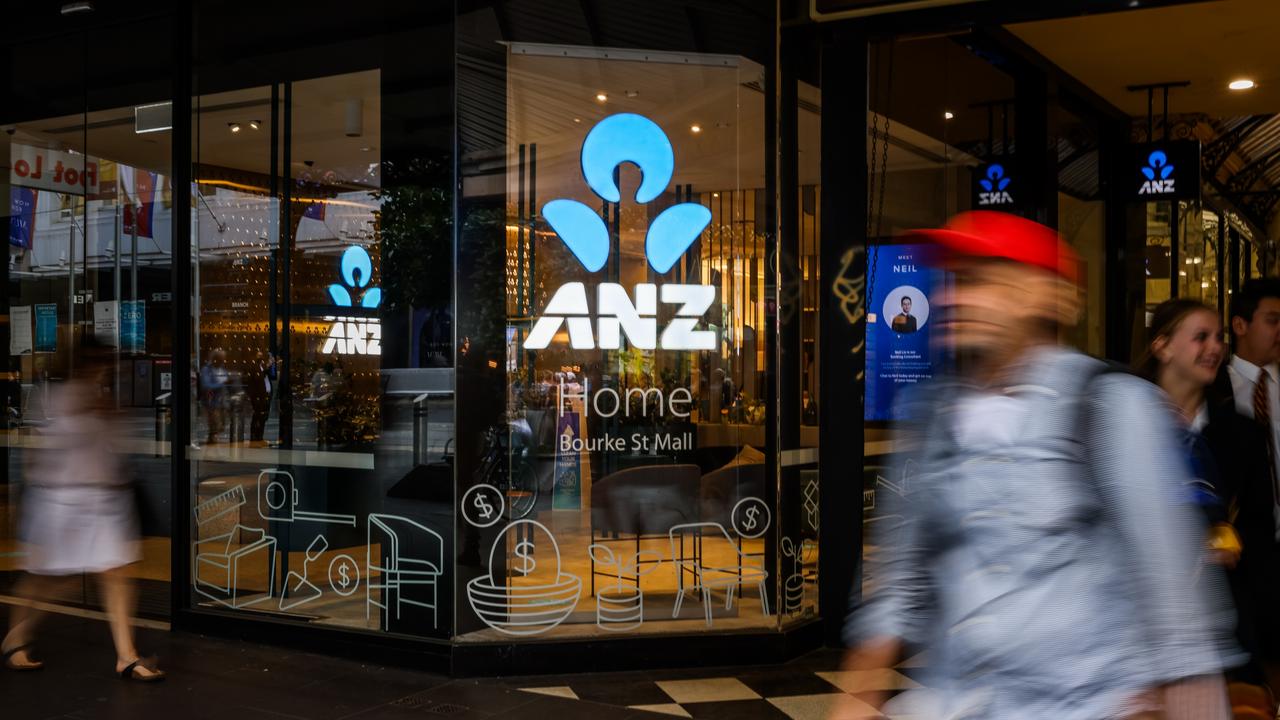Australian banks tighten lending standards as interest rates rise
Aussie banks are making changes that could make it even harder for homebuyers struggling to get into the market.

Homebuyers could find it even harder to get a loan as rising interest rates prompt Australia’s major banks to tighten their lending standards.
ANZ has confirmed it will only accept home loan applications where the debt-to-income ratio is less than 7.5, meaning customers won’t be able to borrow as much. It said it had made the decision, which will come into effect from June 6, “given the changing interest rate environment”.
“ANZ regularly reviews lending appetite and policies as the economic environment changes to ensure we are continuing to lend prudently to our customers,” an ANZ spokesman said.
The debt-to-income ratio calculates a person’s total monthly debts and divides this by their monthly income.
ANZ’s move follows National Australia Bank’s decision to cut its debt-to-income ratio limit from nine times to eight times, although NAB will still consider lending at higher levels if credit checks for individual customers are positive.
“NAB will continue to put responsible lending first in its approach to credit and we welcome ongoing consultation with regulators,” NAB executive Kirsten Piper said.
Other banks say they will also apply greater scrutiny on loans with a higher debt-to-income ratio (DTI).
A Commonwealth Bank spokesman said it applied tighter lending parameters for loans with a debt-to-income ratio above six times and where the customer had a small deposit.
Westpac said loans with a DTI of seven times or more were automatically sent to the credit team for manual assessment.
“The DTI ratio is one of several considerations when we review home loan applications,” a spokeswoman said. “We also assess borrowers at a higher interest rate than their initial rate to ensure they can meet future changes in interest rates.”
The Australian Prudential Regulation Authority (APRA) considers a DTI over six times as potentially higher risk, as well as interest only loans, and loans approved with a deposit of less than 10 per cent.
Last October, APRA noted that household debt levels relative to income were very high – both historically and internationally – partly due to very low interest rates and rapidly increasing property prices.
It said the rate of household credit growth was likely to exceed income growth for the foreseeable future, further adding to debt levels.
Stream more finance news live & on demand with Flash. 25+ news channels in 1 place. New to Flash? Try 1 month free. Offer ends 31 October, 2022 >

APRA said all financial institutions should be operating with a buffer of at least 3.0 percentage points over the loan interest rate.
It will also consider the need for “further macroprudential measures” if lending at high debt-to-income ratios continued to rise.
However, banks still look to be eager to gain the business of those who can meet stricter standards, with many of them lowering their variable rates for new customers.
ANZ has cut its lowest variable rate down to 2.29 per cent, Westpac is giving its customers a two-year honeymoon rate of 2.09 per cent and the Commonwealth Bank is offering a starting variable rate of 2.14 per cent.
“What these big bank cuts show is that competition in the mortgage market is still alive and kicking, despite the RBA hikes,” RateCity research director Sally Tindall told The Australian.
“While most variable customers will now be dealing with higher repayments, some banks eager for new business are handing out exemptions.”
It comes after all four major banks raised their variable interest rates for existing customers to match the Reserve Bank of Australia’s decision to increase the cash rate by 0.25 percentage points, from 0.1 per cent to 0.35 per cent.
Most analysts expect the RBA will keep raising rates, by as much as 2 percentage points in the next year.
While interest rate rises will likely help bring house prices down, they also lower the amount of money people can borrow, and the gap between the two may not be as beneficial to buyers as first hoped.
Canstar has crunched the numbers and found that for a couple on a combined income of $180,000, their borrowing capacity will drop by 2.6 per cent thanks to the recent 0.25 per cent rate rise – meaning they will be able to borrow $34,000 less.
If interest rates rise by 2 per cent, which many experts predict will happen by next year, their borrowing power would be cut by $227,000, to just over $1 million.
Overall people could see their borrowing capacity reduced by almost 18 per cent if interest rates rose by 2 per cent, which means property prices would need to drop by more than this amount to leave them better off.
Experts are predicting substantial house price drops of anywhere between 5 per cent and 15 per cent, but these falls would not be enough to compensate for the reduced borrowing capacity.






